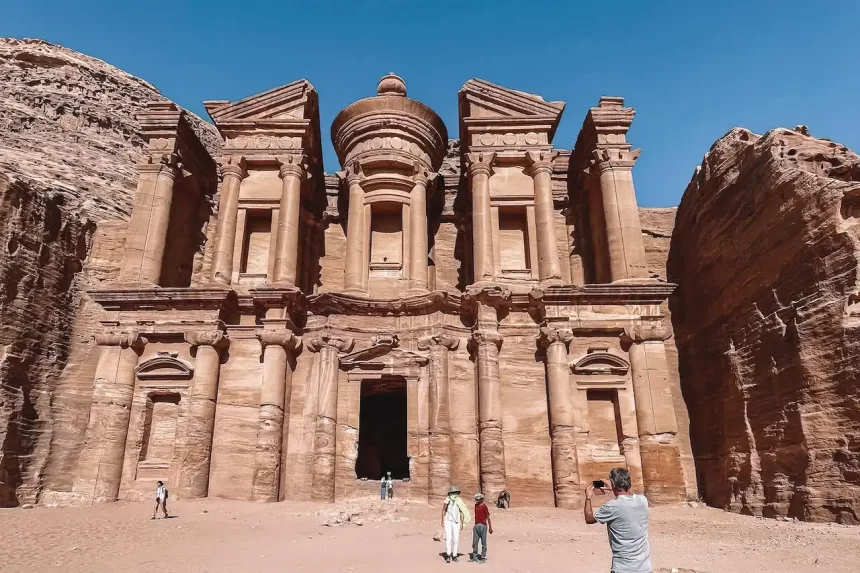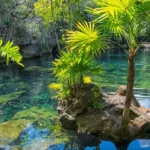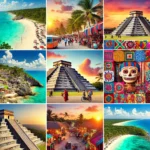Overview of Petra Jordan
Petra, an archaeological gem in Jordan, is a blend of history, culture, and natural beauty. This guide offers an expansive look at Petra, delving into its history, key attractions, activities for travelers, travel tips, local experiences, nearby attractions, and accommodation options. Each section is enriched with detailed insights to aid travelers in planning an unforgettable journey to this ancient wonder.

Private 2 -Days Tour to Petra – UNESCO World Heritage Site with Petra by Night
History and Significance
Petra, often referred to as the “Rose City” due to the color of the stone from which it is carved, is a historical and archaeological city in southern Jordan. Its history is a tale of prosperity, decline, and rediscovery.
Origins and Historical Importance: Petra was established in the 4th century BC as the capital city of the Nabateans. This Arab kingdom flourished due to its control of the incense trade routes across the region. Petra’s significance grew as it became a melting pot of Arabian, Greek, and Roman cultures, evident in its diverse architectural styles.
Architectural Marvels: The city’s architecture is primarily known for its rock-cut structures. The Nabateans were masters in harnessing water, which is evident in their intricate water conduits and dam systems, a necessity for surviving the desert climate. Petra also showcases a variety of tombs, temples, and altars, each representing a mix of eastern traditions and Hellenistic architecture.
Rediscovery and Preservation: Lost to the Western world after the 14th century, Petra was rediscovered in 1812 by Swiss explorer Johann Ludwig Burckhardt. Since then, it has become a major archaeological site and a significant draw for tourists worldwide. Preservation efforts are ongoing to protect and maintain its structures from natural and human-made threats.
Key Attractions
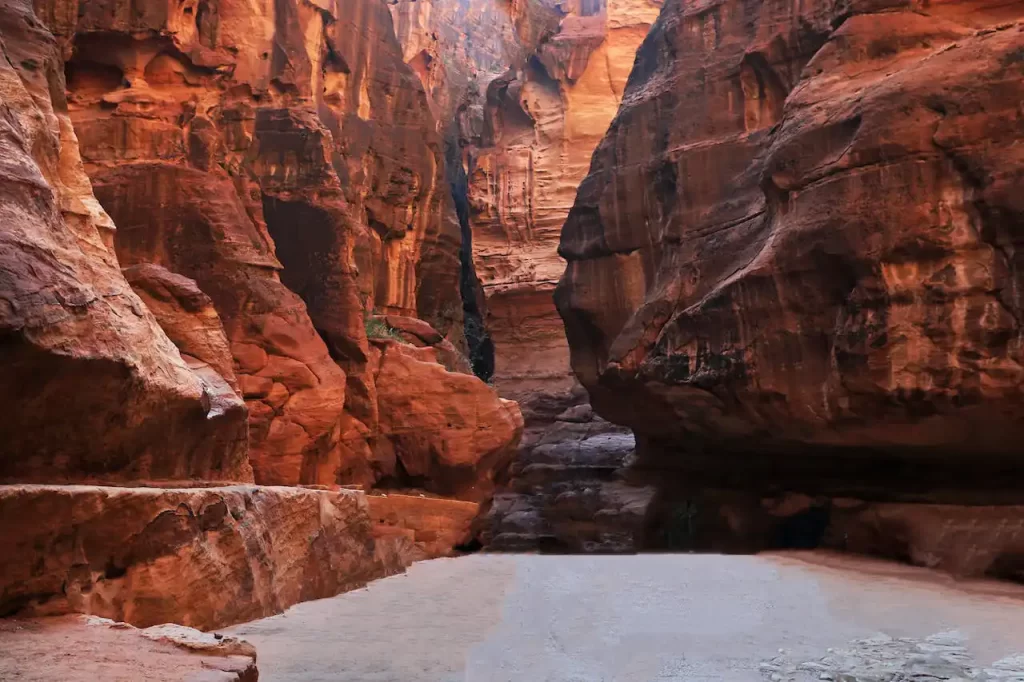
Petra is home to a myriad of historic sites, each offering a unique glimpse into the past.
The Siq: This narrow gorge, with walls towering up to 80 meters, is a geological marvel leading to Petra’s most famous structure, the Treasury. Walking through the Siq is like traveling back in time, as visitors are surrounded by inscriptions, sacred niches, and small altars.
The Treasury (Al-Khazneh): Believed to be built in the 1st century BC, the Treasury is a stunning example of ancient Nabatean architecture. Its intricate façade, adorned with mythological figures and motifs, has made it a symbol of Petra.
The Monastery (Ad Deir): Larger than the Treasury, the Monastery is another imposing structure, offering breathtaking views of the surrounding valleys. Its name, ‘Monastery’, is a misnomer, given by the Bedouins, as it was likely used as a temple.
Royal Tombs: These include the Urn Tomb, Silk Tomb, Corinthian Tomb, and Palace Tomb. Each tomb has unique architectural features, showcasing the grandeur of Nabatean craftsmanship.
The Theatre: Carved into the side of a mountain, this Roman-style theatre could seat around 3,000 spectators, illustrating the blend of Nabatean and Roman cultures.
Activities for Travelers
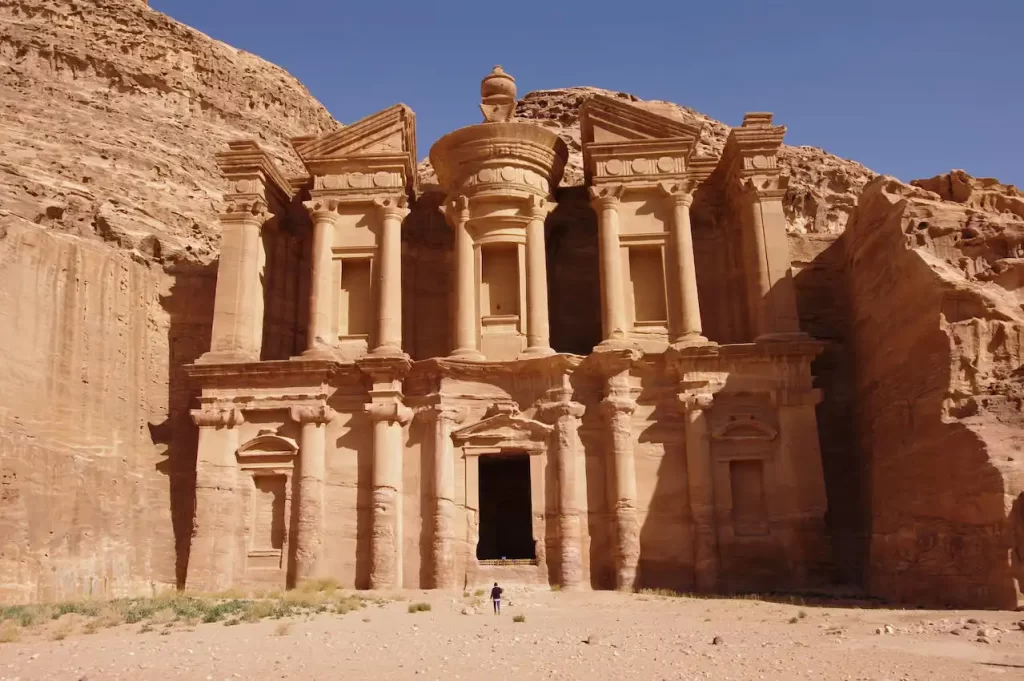
Petra offers a range of activities to immerse travelers in its ancient world.
Guided Tours: Knowledgeable local guides bring the history of Petra to life, explaining the significance of each site and sharing stories of the past.
Hiking: Trails like the Al-Khubtha Trail lead to high vantage points offering stunning views of the Treasury from above. The trek to the Monastery is also a favorite among hikers.
Photography: The ever-changing light on Petra’s pink sandstone provides a perfect opportunity for photographers to capture the essence of this ancient city.
Night Tours: The Petra by Night tour, where the path to the Treasury is illuminated by thousands of candles, offers a mystical experience of the ancient city.
Cultural Activities: Engaging with local Bedouin guides and tea at Bedouin tents provide a deeper understanding of the local culture.
Travel Tips
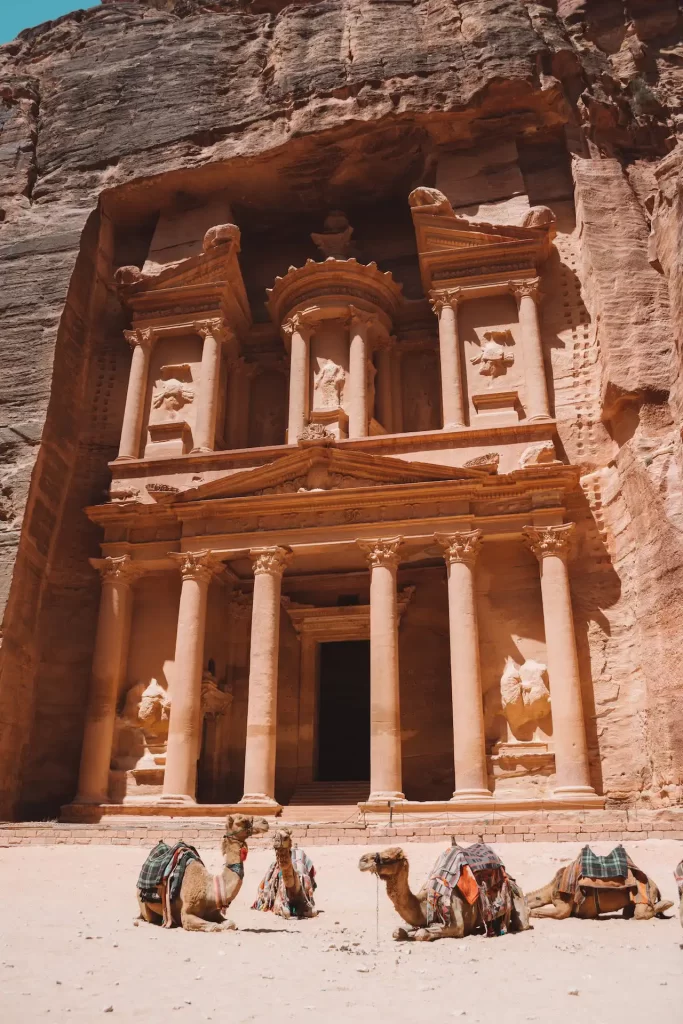
Visiting Petra requires careful planning to maximize the experience.
Climate and Clothing: The desert climate means hot days and cool nights. Lightweight, breathable clothing with good walking shoes is essential. Hats, sunglasses, and sunblock are also recommended.
Accommodation: While there are no accommodations within Petra itself, the nearby town of Wadi Musa offers a range of options, from luxury hotels to budget hostels.
Tickets and Timing: Buying tickets in advance can save time. Early morning or late afternoon visits can avoid the peak crowds and the midday heat.
Local Interaction: Engaging respectfully with the local Bedouin community can enhance the experience. Many Bedouins sell handmade crafts and offer camel and donkey rides.
Local Experiences
The area around Petra offers a rich cultural experience.
Bedouin Culture: The local Bedouin people have a deep connection to Petra. Experiencing their hospitality, hearing their stories, and understanding their way of life adds an invaluable dimension to the visit.
Cuisine: Jordanian cuisine is a must-try. Dishes like Mansaf (a traditional Bedouin dish of lamb cooked in a sauce of fermented dried yogurt and served with rice) and Maqluba (an upside-down rice and vegetable dish) offer a taste of local flavors.
Handicrafts: The local markets in Wadi Musa and the Bedouin stalls in Petra sell a range of handicrafts, including hand-woven rugs, pottery, and traditional jewelry.
Nearby Attractions
The region around Petra is rich in other attractions worth exploring.
Wadi Rum: Known as the Valley of the Moon, this desert wilderness is famous for its stunning sandstone mountains, ancient rock carvings, and the unique experience of Bedouin camping under the stars.
Dead Sea: The lowest point on earth is a short drive from Petra. The Dead Sea is renowned for its hyper-saline water, which makes floating effortless, and its mineral-rich mud, used for therapeutic and cosmetic treatments.
Aqaba: Jordan’s only coastal city, located on the Red Sea, offers beautiful beaches, coral reefs for snorkeling and diving, and a relaxed atmosphere different from the desert interior.
Amman: The capital city of Jordan, Amman has historical sites like the Roman Theatre, the Citadel, and the Jordan Museum, as well as modern shopping and dining experiences.
FAQ
Q1: Do I need a guide to visit Petra? A: While not required, a guide can enhance your understanding of the site’s history and significance.
Q2: How much time is needed to explore Petra? A: At least two days are recommended to fully explore the main sites and some of the lesser-known areas.
Q3: Is Petra accessible for those with mobility issues? A: Some areas can be challenging due to the terrain. However, horse-drawn carriages are available for rent to access some of the main sites.
Q4: What should I bring for a day trip to Petra? A: Water, sun protection, comfortable walking shoes, and a camera are essentials.
Q4: Are there any cultural norms or dress codes to be aware of? A: Dressing modestly is recommended, both out of respect for local customs and to protect against the sun.
Q5: Can I buy food and water in Petra? A: Yes, there are several places within Petra to buy food and water, but it’s advisable to bring your own water to stay hydrated.
